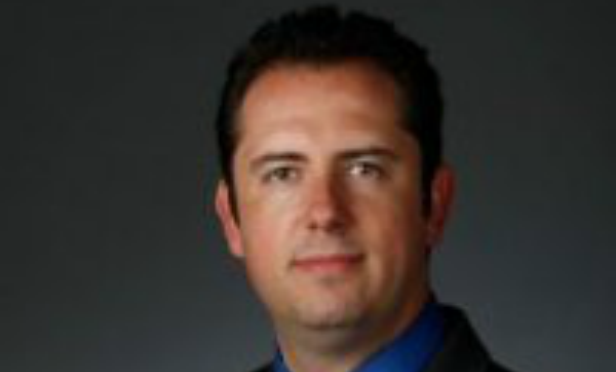
The City of San Diego is pioneering one of the first smart city programs in the US with Current by GE. This month, the city rolled out smart sensors on 3,200 street lamps throughout the city that have the ability to collect and record data—everything from traffic flow and parking to crime and environmental data—that can be accessed by multiple city departments and by apps created by city residents. We sat down with Austin Ashe, co-founder and general manager of Intelligent Cities at Current by GE, to talk about the program, how it started and how it could mean big changes for the city.
GlobeSt.com: What was the impetus to launch the smart city program in San Diego?
Austin Ashe: We have been partnered with the City of San Diego for some time, and in speaking to them, we learned about their energy savings goals, which were very aggressive. We learned that the light poles throughout the city were extremely valuable pieces of real estate. The city challenged us to come up with a methodology of not just reducing energy but coming up with more value out of their street lighting assets. We did a pilot with them in 2015 that repurposed their streetlight infrastructure into a sensor device. It was a piece of digital infrastructure that could extract a lot of really valuable data around the street pole.
We painted this vision that if we could deploy sensors on 10% to 25% of these poles, we could literally put our finger on the pulse of the city. We could extract things like parking data, knowing when a car parks or leaves; we could extract parking data, not just knowing the number of cars but the speed of cars and the direction they are traveling in; we could detect gunshots or add environmental sensors that collect important data. Being able to detect all of this data at a granular level, block by block, we could literally put our finger on the pulse of the city. Then if we did it through an IOT approach, we could build a platform around this and have applications be built that solve some of the city's biggest challenges. We started the process in 2015 and today, we are rolling out 3,200 of those nodes across the city, which would be the world's largest IOT censor platform in the world.
GlobeSt.com: Why were the streetlights so valuable for this program?
Ashe: First, they are everywhere. There is one every 200 feet. Second, there is power running to the pole already, so it makes it uniquely positioned to power a bunch of sensors. Third, the streetlights sit 30-feet up in the air, which is the perfect vantage point to see things and extract necessary data.
GlobeSt.com: Can you collect all of this data using a single sensor?
Ashe: It is like a smart phone, which has a lot of different sensors that make the phone work. This is like a smart phone on a pole. This has seven physical sensors and 30-plus virtual sensors that are enabled by a technology called computer vision analytics.
GlobeSt.com: Once the data has been collected, how does the city use it?
Ashe: The data is stored in a cloud and is accessed through an API. It is a piece of software that an application developer can collect to. These apps can get plumed up to these APIs, and you can retrieve historical data or you can get real time data, like parked cars. You could build an app that could know in real time parking data, and could guide users to open parking spaces.
GlobeSt.com: How has the City of San Diego responded to the initial success of the program?
Ashe: San Diego is an innovator in this regard. They are all about paving the future for their citizens. We are just in the middle of operationalizing the pilot, and they are working on developing applications that can optimize city departments. They believe that this data can be used for multiple departments, and that is uncommon for city infrastructure. This is the first time that multiple organizations within the city can access the same data sets to drive more synergistic operations. Secondly, they are extremely excited to open this data up to the community. When you think about what cities are trying to do around transparency and changing the civic engagement model with there citizens, one of the best ways to do it is to open data up. The city is running hack-a-thon events where they are engaging local talent with creative ideas and skillsets around technology development. They are showing them this data and asking what kind of applications they want to see built. Some really clever apps have been built as a result.
© Touchpoint Markets, All Rights Reserved. Request academic re-use from www.copyright.com. All other uses, submit a request to [email protected]. For more inforrmation visit Asset & Logo Licensing.






